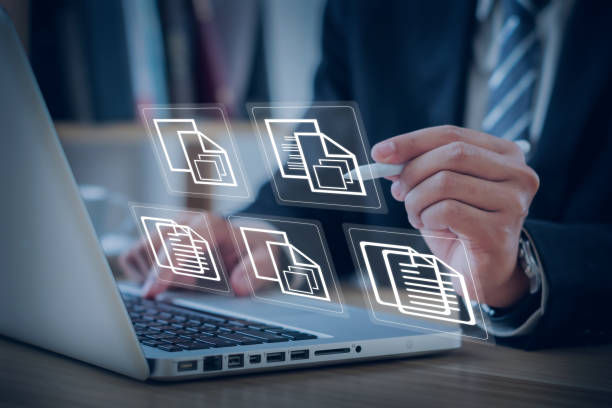Introduction to On-Page SEO and Its Importance
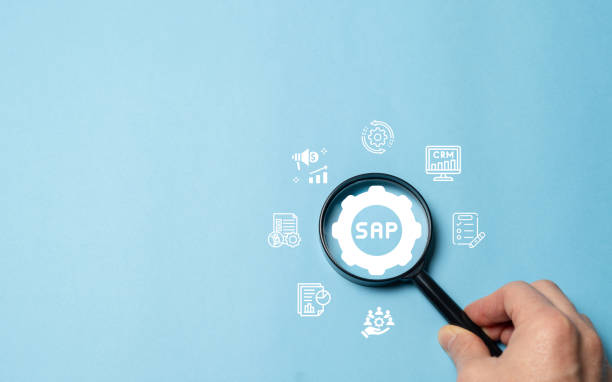
In today’s highly competitive web world, a strong presence in search engines is vital for every business and website.
This is where the concept of On-page SEO (On-page SEO) comes into play; a set of optimizations performed within the website itself to make its content and structure more understandable and appealing to search engines.
Unlike off-page SEO, which deals with activities outside the site (like link building), #On_page_SEO focuses on factors such as content quality, HTML structure, and user experience.
This part of SEO is considered one of the most fundamental yet effective strategies for improving #ranking and increasing #organic_traffic.
The main goal of On-page SEO is to send clear signals to search engines about the topic and relevance of your content.
If search engines don’t properly understand what your content is about, they can never show it to relevant users.
This process is completely educational and explanatory, meaning you must constantly be learning and implementing best practices.
On-page optimization includes selecting appropriate keywords, improving meta titles and descriptions, structuring content correctly using Heading tags, optimizing images, and internal link structure.
Without a strong On-page SEO strategy, even the best content may get lost among a flood of other information and never reach its target audience.
In fact, these preliminary actions lay the groundwork for any other success in search engine optimization and prepare a website to be seen.
Did you know that 94% of the first impression of a company is related to its website design?
RasaWeb helps you create the best first impression by providing professional corporate website design services.
✅ Create a professional and trustworthy image for your brand
✅ Easier attraction of potential customers and improvement of online standing
⚡ Get free corporate website design consultation
Keyword Research: The Foundation of Successful On-Page SEO
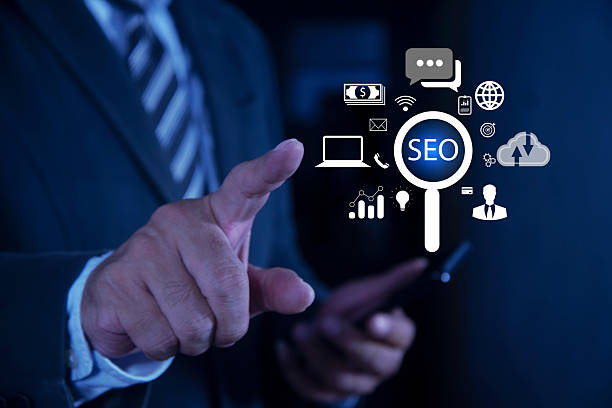
Keyword Research is the beating heart of every successful On-page SEO strategy.
Before taking any action to create content or optimize existing pages, you must know exactly what words and phrases your target audience uses to search for your information, products, or services.
This stage is completely analytical and requires high precision.
This process begins with brainstorming and ideation about topics related to your business.
Then, using keyword research tools like Google Keyword Planner, Ahrefs, SEMrush, or even Google Search Console, you can examine the search volume, competition level, and relevance of various keywords.
The main focus in On-page SEO is on Long-tail Keywords; these phrases consist of three or more words and usually indicate the searcher’s intent with greater precision.
For example, instead of “shoes”, the phrase “buy cheap men’s running shoes” is a long-tail keyword that has less competition and results in a higher conversion rate.
Understanding “Searcher Intent” is of particular importance; is the user looking for information (Informational), intending to buy (Transactional), or wanting to go to a specific website (Navigational)? Matching your content with the searcher’s intent significantly increases your chances of ranking higher in On-page SEO.
After identifying suitable keywords, you should naturally incorporate them into your page title, meta descriptions, headings, and main content text without excessive repetition (Keyword Stuffing) so that search engines can correctly understand the relevance of your content to those keywords.
This is an essential step for any internal site optimization.
Content Optimization: The Backbone of Effective On-Page SEO
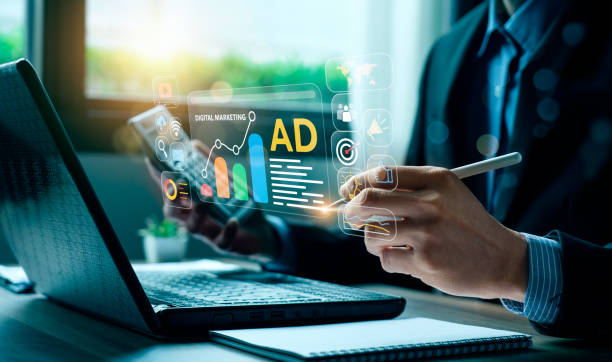
Content is king, and in the realm of On-page SEO, this statement holds true more than ever.
Content optimization means creating content that is not only appealing to search engines but also best addresses users’ needs and questions.
This is a specialized process that requires SEO knowledge and a deep understanding of the audience.
The first step is to ensure the quality and value of the content.
Your content must be unique, comprehensive, and accurate.
Avoid repeating content found on other websites; instead, offer new insights or information.
Content readability is also very important; use short paragraphs, clear sentences, and appropriate subheadings (H2, H3, H4) to organize information.
This structure not only helps users easily scan your content but also assists search engines in understanding the hierarchy and main topics of the page.
Incorporating main keywords and their synonyms naturally into the text, without compromising readability, is a fundamental principle of On-page SEO.
The goal is to create text that is both appealing and useful for search engine crawlers and humans alike.
Additionally, using visual media such as images, videos, and infographics can enhance the attractiveness of your content and increase user dwell time on the page, which itself is a positive signal for search engines.
This is a comprehensive guide for anyone looking to enhance their content for on-page optimization.
Considering “E-E-A-T” (Experience, Expertise, Authoritativeness, and Trustworthiness) is one of Google’s very important factors in content ranking.
| Factor | Optimized Content | Weak Content |
|---|---|---|
| Keywords | Natural and relevant use in text, headings, and descriptions | Excessive repetition (keyword stuffing) and inappropriate use |
| Readability | Short paragraph structure, clear sentences, use of lists and headings | Long, unbroken text, complex and vague sentences |
| Value and Credibility | Providing unique, comprehensive, accurate, and documented information | Copied or superficial, inaccurate or outdated information, lacking expertise |
| User Intent | Completely addressing user search intent and solving their problem | Mismatch with search intent, insufficient or irrelevant content |
HTML Tag Optimization: A Crucial Element in On-Page SEO
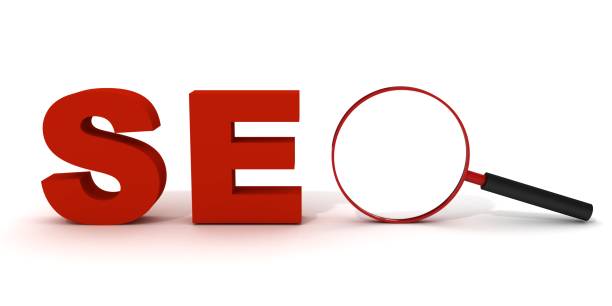
HTML tags are among the fundamental elements in On-page SEO that help search engines better understand your page’s content.
These tags, although they may not be directly visible to the user, convey very important information to Google’s crawlers.
The most important of these tags include: the title tag (<title> Tag), Meta Description, and Heading Tags (H1, H2, H3, …).
The <title> tag is the most vital On-page SEO element and is usually the first thing users see in search results.
It should be unique, include the page’s main keyword, and be engaging to increase the click-through rate (CTR).
Its ideal length is around 50-60 characters.
The meta description is a summary of the page’s content displayed below the title in search results.
Although it doesn’t directly impact ranking, it can entice users to click.
It should be engaging, contain keywords, and be encouraging.
Its ideal length is around 150-160 characters.
Heading tags (H1 to H6) help organize content on the page and provide it with a logical structure.
The H1 tag should include the page’s main keyword and be used only once per page.
H2 and H3 tags are used to divide content into subsections and to incorporate secondary and related keywords.
This organization provides search engines with a clear explanation of the information hierarchy and helps them better understand sub-topics.
Optimizing these tags is an integral part of on-page site optimization that significantly aids in improving crawlability and indexing.
Furthermore, the correct use of Alt tags for images is also vital for search engines’ understanding of visual content, which we will delve into further in later sections.
Are you tired of your company’s website not meeting your expectations? With RasaWeb, design a professional website that truly represents your business.
✅ Increase attraction of new customers and sales leads
✅ Boost your brand’s credibility and trust among your audience
⚡ Get a free website design consultation!
Internal Linking: The Powerful Architecture of On-Page SEO
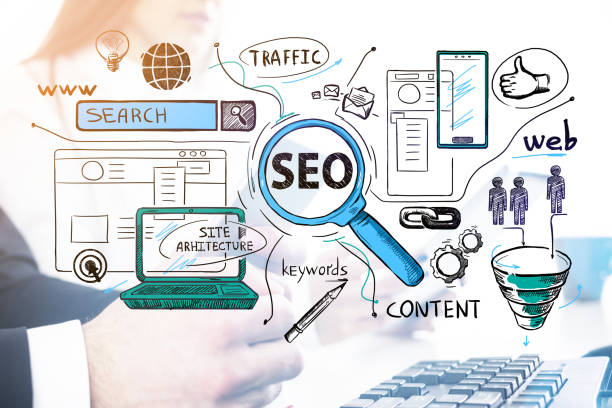
Internal Linking is one of the most powerful strategies in On-page SEO that is often overlooked.
This process involves creating links from one page on your website to another page within the same website.
The importance of internal linking lies in three main aspects: improving search engine crawlability, distributing link equity (Link Equity or PageRank) throughout the site, and enhancing user experience (UX).
When search engines crawl a page, they use the links on that page to discover new pages and understand the connections between them.
A strong and logical internal linking structure helps search engines easily find and index all important pages of your website.
This is very important for internal optimization.
Furthermore, internal linking helps distribute “authority” throughout your website.
Pages that have received high authority from external links (Backlinks) can pass this authority to other pages through internal links, helping them rank.
This process is known as “PageRank Flow,” and there is a vital guide for its optimal use.
From a user experience perspective, internal links help users easily navigate your site and discover more relevant content.
This not only increases user dwell time on your site but also reduces the bounce rate.
When creating internal links, use relevant and descriptive Anchor Texts that clearly indicate what the destination page is about.
Do not overlook linking to important and relevant pages that include target keywords.
A smart internal linking strategy is crucial not only for On-page SEO but also for your website’s overall structure, giving it a powerful architecture.
Optimizing Images and Multimedia for On-Page SEO
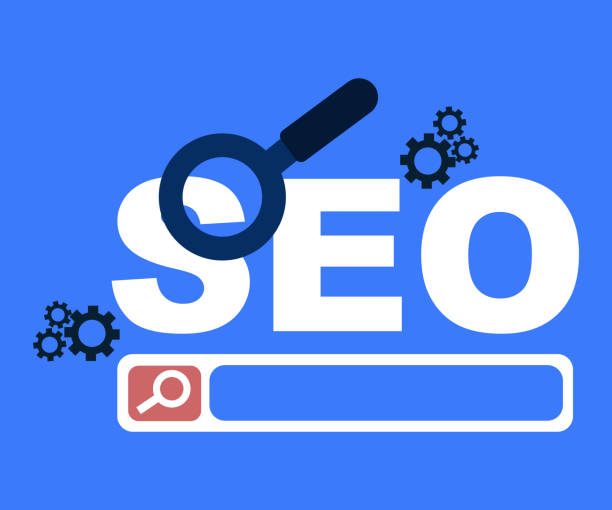
In today’s world where visual content reigns supreme, optimizing images and other multimedia elements for On-page SEO is of paramount importance.
Images not only add to the visual appeal of a page but can also be a significant source of traffic through image search on their own.
For image optimization, there are a few key points:
- **File Size:** Large images can drastically slow down page loading speed.
Use image compression tools like TinyPNG or Compressor.io to reduce file size without significant loss of quality.
The goal is a balance between visual quality and loading speed. - **File Format:** Modern formats like WebP have smaller sizes and offer good quality compared to JPEG and PNG.
Using these formats can help improve site speed. - **Descriptive File Names:** Instead of generic names like “IMG_1234.jpg”, use names that describe the image content and include relevant keywords.
For example: “men’s-nike-running-shoes.jpg”. - **Alt Text:** Alt Text, or alternative text, is a brief description of the image content that is displayed to users if the image fails to load and is also read by screen readers for visually impaired individuals.
This is an excellent opportunity to include keywords relevant to the image and enhance search engines’ understanding of visual content in On-page SEO. - **Captions and Titles:** Although Alt Text is more important for search engines, image captions and titles, which are visible to users, can help with better content understanding and improve user experience.
This is a practical guide for increasing site visibility through images.
Also, if using videos, ensure the video player is lightweight and does not impose extra load on the page.
Creating video sitemaps and using video schema can also help search engines find and index your video content.
Adhering to these tips is essential not only for internal site optimization but also for providing a desirable user experience.
Site Speed and User Experience: Accelerators for On-Page SEO

Site speed and User Experience (UX) have been indispensable pillars of On-page SEO in recent years.
Google increasingly emphasizes the importance of Core Web Vitals, which include three main metrics for measuring user experience in terms of loading speed, interactivity, and visual stability of the page:
- **LCP (Largest Contentful Paint):** The time required to load the largest content element in the user’s viewport.
Optimal LCP means a fast loading experience for users. - **FID (First Input Delay):** The time from the user’s first interaction (e.g., clicking a button) until the browser can respond to that interaction.
A low FID indicates quick site responsiveness. - **CLS (Cumulative Layout Shift):** Measures the amount of unexpected layout shift of visual elements during page loading.
A low CLS means visual stability and preventing an unpleasant user experience.
These metrics directly impact On-page SEO ranking, especially in Core Web Vitals.
Faster sites have lower bounce rates, and users spend more time on them, which itself sends positive signals to search engines.
To improve site speed, you can use a CDN (Content Delivery Network), compress and optimize CSS and JavaScript codes, leverage browser caching, and compress images.
In addition to speed, responsive design (Mobile-Friendliness) is also crucial for internal optimization; as a significant portion of web traffic comes from mobile devices.
A user-friendly site, with easy navigation and accessible content, not only improves your ranking but also provides a more enjoyable experience for users and increases return traffic.
This analytical approach helps you improve your website’s performance.
| Core Web Vitals Metric | Description | Importance in On-page SEO |
|---|---|---|
| LCP (Largest Contentful Paint) | Time to load the largest content element in the user’s viewport. (Goal: under 2.5 seconds) |
Directly impacts the initial loading experience and user perception of site speed and is a ranking factor. |
| FID (First Input Delay) | Time delay for the user’s first interaction with the page (e.g., clicking a button). (Goal: under 100 milliseconds) |
Indicates the site’s responsiveness to user actions. Low interactivity leads to poor user experience. |
| CLS (Cumulative Layout Shift) | Measures the amount of unexpected layout shift of elements on the page. (Goal: under 0.1) |
Ensures visual stability. Sudden layout shifts cause user dissatisfaction and abandonment of the page. |
Technical SEO: An Integral Part of On-Page SEO
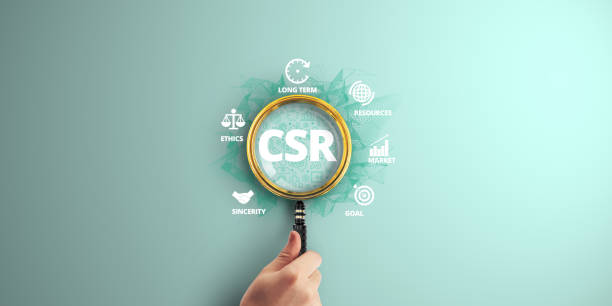
While On-page SEO primarily focuses on content and visible elements on the page, the vital role of Technical SEO in supporting it cannot be overlooked.
Technical SEO involves optimizations performed behind the scenes of a website, helping search engines more effectively crawl, index, and understand your pages.
This is an essential complement to on-page optimization.
The most important technical SEO elements that directly impact On-page SEO include:
- **XML Sitemap:** An XML file that contains a list of all important URLs of your website, helping search engines discover and index new and updated pages.
- **robots.txt file:** This file tells search engines which parts of your site they can crawl and which they should not.
Proper management of this file is crucial to prevent the indexing of less important or duplicate pages. - **Canonical Tag:** In cases where similar or duplicate content exists on different URLs of your site, the Canonical tag informs search engines which version of the page is the original and should be indexed.
This prevents the problem of Duplicate Content. - **Use of HTTPS:** Website security through SSL certificate and HTTPS protocol is a ranking factor and gives users a greater sense of trust.
This indirectly affects on-page site SEO. - **Structured Data Markup:** Using Schema Markup helps search engines better understand your content and enables the display of Rich Snippets in search results, which can significantly increase click-through rates.
Ensuring the technical health of your website provides a strong foundation for your On-page SEO efforts, and without it, even the best content might not achieve a good rank due to crawling or indexing issues.
Are you losing business opportunities because of an outdated website? With RasaWeb, permanently solve the problem of not attracting potential customers through your website!
✅ Attract more high-quality leads
✅ Enhance brand credibility in the eyes of customers
⚡ Get free corporate website design consultation!
Monitoring and Analyzing On-Page SEO Performance with Professional Tools
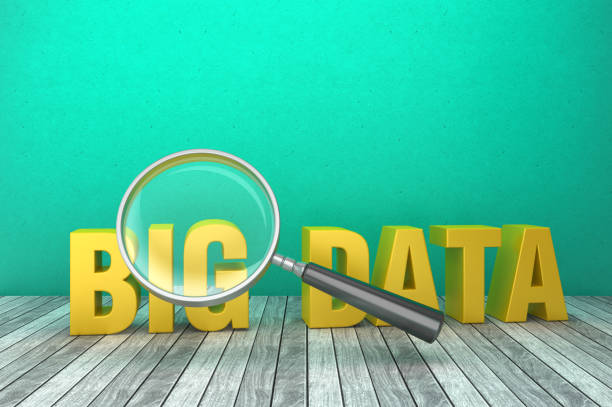
After implementing On-page SEO strategies, the next stage is monitoring and analyzing their performance.
Without measurement, you cannot know which actions were effective and which need improvement.
This part of the work is entirely news-based and up-to-date, requiring the use of professional web analytics tools.
The most important tools for monitoring On-page SEO include:
- **Google Search Console (GSC):** This free tool from Google provides vital information about your site’s performance in search.
You can check indexed pages, crawl errors, keywords users used to find your site, and Core Web Vitals issues.
GSC offers valuable insights for internal optimization. - **Google Analytics (GA):** A comprehensive tool for website traffic analysis.
You can monitor traffic sources, user behavior on the site (dwell time, bounce rate, navigation path), and conversion rates.
This data helps you improve user experience and adjust your content strategy. - **Keyword Research and Competitor Analysis Tools (Ahrefs, SEMrush, Moz):** These paid tools offer advanced features for keyword research, analyzing your and competitors’ backlink profiles, identifying new opportunities, and checking the technical status of the site.
They are essential for a question-provoking content approach to overall SEO performance. - **Site Speed Testing Tools (Google PageSpeed Insights, GTmetrix):** These tools evaluate your page loading speed and provide suggestions for improvement.
As mentioned in previous sections, site speed is an important factor in On-page SEO.
Regular monitoring of these metrics and tools allows you to observe your site’s growth trend, identify and resolve potential issues before they become serious, and continuously improve your On-page SEO strategy.
Data analysis helps you make data-driven decisions and maximize the effectiveness of your efforts.
Common Mistakes and Advanced Tips in On-Page SEO

In the process of implementing On-page SEO, there are some common mistakes that can harm your efforts, and on the other hand, advanced tips that can create a significant competitive advantage.
Awareness of these points is an entertaining but vital aspect for SEO professionals.
**Common Mistakes:**
- **Keyword Stuffing:** Insisting on excessive repetition of keywords in the text not only harms readability but is also identified by search engines as a spam tactic and can lead to penalties.
- **Duplicate Content:** The presence of identical or very similar content on multiple URLs of your website can confuse search engines and harm your domain’s authority.
Correct use of the Canonical tag is essential to solve this problem. - **Weak or Insufficient Internal Linking:** The absence of a proper internal linking structure or linking to irrelevant pages can hinder effective crawling and PageRank distribution across the site.
- **Ignoring Mobile User Experience:** In the mobile era, a website that does not display well or performs poorly on mobile devices loses its chance for ranking in On-page SEO.
- **Inappropriate Titles and Meta Descriptions:** Duplicate, too short or too long, or irrelevant meta titles and descriptions can reduce click-through rates.
**Advanced Tips for On-page SEO:**
- **Advanced Schema Markup:** Using specific schema for different content types (e.g., articles, products, recipes, events) can help Google understand your content more deeply and display more appealing Rich Snippets in search results.
- **Optimizing for Voice Search:** With the increasing popularity of voice assistants, optimizing content for conversational and question-based keywords can bring new traffic.
- **Content Repurposing:** Converting existing content into new formats (e.g., an article into an infographic, video, or podcast) can help you attract more audiences with one piece of content and extend its lifespan.
- **Using LSI Keywords:** LSI (Latent Semantic Indexing) keywords are synonyms and conceptually related phrases that help Google better understand the main topic of your page and prevent Keyword Stuffing.
By avoiding common mistakes and implementing these advanced tips, you can elevate your on-page site SEO strategy to a higher level and achieve better rankings in search results.
This is a comprehensive approach to sustainable success.
Frequently Asked Questions
| Question | Answer |
|---|---|
| What is a Meta Title and why is it important in On-page SEO? | The meta title is the most important On-page SEO element displayed at the top of the browser tab and in search results. This title helps search engines and users understand the main topic of the page and should include the main keyword. |
| What role does the Meta Description play in On-page SEO? | The meta description is a short summary of the page’s content displayed below the title in search results. Although it doesn’t directly affect ranking, its attractiveness can increase the click-through rate (CTR). |
| How should keywords be used in page content? | Keywords should be used naturally and relevantly in strategic locations such as the title, headings, first paragraph, and body text. Avoid excessive keyword stuffing. |
| What is the importance of high-quality and comprehensive content in On-page SEO? | High-quality, unique, informative, and comprehensive content that addresses user needs is of high importance. Search engines give higher rankings to content that provides real value. |
| What is the use of Heading tags (H1-H6) in On-page SEO structure? | Heading tags (H1, H2, H3, etc.) are used to structure content and indicate the importance of different sections. H1 is the main title of the page, and each page should have only one H1. Other tags are used for subtitles. |
| How to optimize images for improving On-page SEO? | To optimize images, use descriptive Alt Text that includes relevant keywords, reduce image file size without losing quality, and use meaningful and relevant file names. |
| What characteristics does a user-friendly URL have for On-page SEO? | A user-friendly URL should be short, readable, descriptive, include main keywords, and be free of extra characters. The URL structure should be hierarchical and logical to be understandable for both users and search engines. |
| How does Internal Linking help On-page SEO? | Internal linking, by connecting related pages, helps users and search engine crawlers better understand the site structure, transfers page authority, and increases user presence time on the site. |
| What is the impact of page loading speed on On-page SEO? | High loading speed is crucial for both user experience and SEO ranking. Slower pages might be overlooked by search engines and lead to an increased bounce rate. |
| Why is Mobile-Friendliness highly important in On-page SEO? | Given the increasing number of searches via mobile devices, having a responsive and mobile-friendly site is extremely essential for user experience and ranking in search results (Google’s mobile-first indexing). |
And other services of RasaWeb Advertising Agency in the field of advertising
Smart Brand Identity: A fast and efficient solution for improving SEO ranking with a focus on marketing automation.
Smart Sales Automation: An innovative platform for improving customer behavior analysis with attractive UI design.
Smart Advertising Campaign: A new service for increasing customer acquisition through marketing automation.
Smart Customer Journey Map: An effective tool for increasing website traffic by utilizing real data.
Smart Advertorial: A combination of creativity and technology for digital branding through optimizing key pages.
And over hundreds of other services in the field of online advertising, advertising consulting, and organizational solutions
Online Advertising | Advertising Strategy | Advertorial
Resources
Comprehensive On-Page SEO Training at Modirweb
On-Page SEO Guide at SEO24
What is On-Page SEO? – MihanWP
On-Page SEO Guide from SEO Rooz
? RasaWeb Afarin, your strategic partner in the digital world. From search engine optimization to multilingual website design and content marketing, we guarantee your business’s growth and visibility.
📍 Tehran, Mirdamad Street, next to Bank Markazi, Kazeroun Jonoubi Alley, Ramin Alley, No. 6

